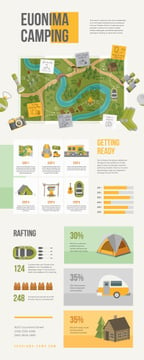Bell camping tents are coming to be increasingly popular as flexible, elegant sanctuaries for outdoor camping and glamping. Yet what's the history behind this enduring style?
Can you live in a tent in winter?
Henry Hopkins Sibley patented the single-pole cone-shaped camping tent that we know as a bell outdoor tents. Nevertheless, he defected to the Confederacy and never ever got his royalties.
Eventually, another person added brief walls to the cone cover and developed what we now called a bell camping tent.
Origins
The appeal of bell camping tents is growing, and they're currently a staple at camping events and as elegant backyard hideaways. Their roomy interiors supply a flexible home from home setting that's suitable for families and teams of pals, while the circular layout aids with security in solid winds.
The layout of the modern bell outdoor tents can be mapped back to military outdoors tents utilized by European militaries during the Crimean Battle in 1853-1856. Then, in America, a soldier called Henry Hopkins Sibley patented a similar framework that drew ideas from American Tipis.
Both styles are still in use today. Nonetheless, Sibley tents vary from their more recent relatives in that they have side wall surfaces and a raised bigger entrance. Sibley camping tents also count on a single main post for support that makes them simpler to establish yet restricts configuration options.
Purpose
Bell camping tents' unique form and spacious insides make them the ideal option for a wide variety of outside activities. Whether you're hosting a backyard camping event, glamping at a remote natural hideaway or going on an epic fantasy-inspired journey, the convenience of these camping tents ensures that your experience will fit and stylish.
The bell-shaped camping tent was initially patented in 1856 by Henry Hopkins Sibley, who had made the design after observing Indigenous American tipi outdoors tents. However, he surrendered from the United States Army at the break out of the Civil Battle, forfeiting his legal rights to future royalties.
Since then, the design has ended up being a staple of several glamping experiences. These elegant outdoors tents often feature luxurious bed linens and en-suite restrooms, providing campers the possibility to enjoy nature without compromising convenience.
Layout
In the modern day, bell camping tents have actually experienced camping a resurgence in popularity, as people seek an extra immersive outdoor experience. They are used in a range of setups, consisting of outdoor camping, glamping, and occasions. Their unique form, large insides, and reasonably easy assembly make them a prominent option for those looking for an elegant, historic style to their outside experiences.
The distinct form of a bell tent creates high ceilings and sufficient clearance, making it comfy to stand up in and move. Furthermore, the facility post is not positioned near the entrance of the tent, enabling even more personal privacy and space inside the sanctuary.
The bell camping tent layout traces back to an American soldier called Henry Hopkins Sibley, that was inspired by Native American tipi tents when developing his version of the bell camping tent in 1856. His style was a considerable enhancement over typical military tents, which were difficult to transfer due to their complex building.
Products
In contemporary times, Bell Tents are crafted from superior materials that are developed for lasting toughness. This is why they are a preferred selection among recreational campers, festival-goers, and glampers alike.
In the 19th century, an US Army officer named Henry Hopkins Sibley adapted typical outdoors tents right into what is currently called the modern-day bell outdoor tents. He based his layout on Indigenous American Tipi frameworks, including short walls to the central post structure that made it a lot more steady.
Today, polycotton canvas is a typical material used in the building and construction of bell outdoors tents. This mix of cotton and polyester offers a wide range of benefits, including breathability, superior weather resistance, and easier maintenance than pure cotton canvas. This textile is likewise long lasting and abrasion-resistant. It is thicker than a lot of nylon materials, nevertheless, which can make it heavy and more pricey than typical camping tents.
Modern day
In modern day, the appeal of Bell Tents has actually taken off thanks to glamping websites and events offering up these sizable outdoors tents for couples, groups and families to take pleasure in. The aesthetic charm and sturdiness of these circular outdoors tents are interesting numerous campers.
Whether it be rain or wind, these outdoors tents hold their own versus the aspects. Normally, they're made with canvas that is treated to shield versus dampness, mildew and UV rays.
How do you care for a canvas tent?
It isn't clear exactly when these outdoors tents were developed, but it's extensively recognized that they're a variant of a Sibley tent - called after Henry Hopkins Sibley, who adjusted the layout of the American Indian tipi. It is thought that whoever included short wall surfaces to Sibley's cone canopy was in charge of the creation of the bell tent as we know it today.
